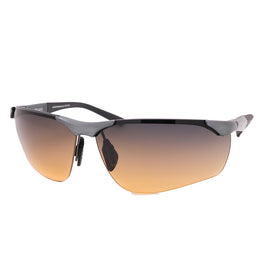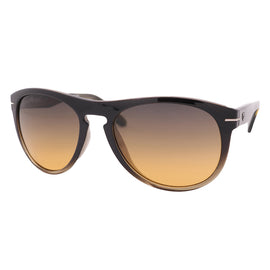Adjusting to Daylight Savings Time

How Amber Lenses Can Help with DST
Twice a year, the clock shifts but our bodies don’t always shift with it. Daylight Savings Time can disrupt sleep patterns, concentration, and even your golf performance. At PeakVision, we design every lens with purpose, and this time of year, one lens color becomes especially valuable: amber.
Whether you’re heading to the course at sunrise or finishing a round as the daylight fades, wearing sunglasses with amber lenses can actually help your eyes and brain adapt more smoothly to Daylight Savings Time.
Why Daylight Savings Time Disrupts You
When the clocks change, your internal clock and your circadian rhythm are thrown off. Light is the #1 environmental cue your brain uses to adjust. When light changes suddenly, so do your sleep patterns, alertness levels, and reaction times.
How Amber Lenses Help Your Eyes (and Brain) Adjust
Amber lenses filter out harsh blue light while enhancing contrast and depth perception. This does more than just improve visual clarity, it helps regulate the signals your brain receives during the early morning and late evening. Here’s how amber lenses support your adjustment:
1. They soften intense early-morning light
The first few mornings after Daylight Savings Time can feel jarring, especially when sunrise comes earlier or later than your body expects. Amber lenses:
- Reduce blue light intensity
- Provide a warm, natural visual tone
- Help your eyes ease into changing sunlight conditions
This softer transition helps reset your internal clock gradually rather than abruptly.
2. They improve visibility in low-light evening hours
Late-afternoon and early-evening rounds often fall into that “in-between light” where visibility drops but the sun still produces glare. Amber lenses:
- Increase contrast
- Brighten dim environments
- Reduce squinting and eye strain
Your brain receives cleaner, clearer visual information, helping it adapt to the new light schedule sooner.
3. They support a healthier circadian rhythm
Blue light affects your melatonin cycle which is the hormone that controls sleep. By wearing amber lenses during sunrise and sunset hours, you help your body regulate those signals more naturally during the Daylight Savings transition.
This can lead to:
- Better sleep
- Improved focus
- A calmer, more alert morning
- And yes, better performance on the course.
Why Golfers Notice the Benefits the Most
Golfers spend more time shifting between sun angles than almost any other sport. Early tee times and long rounds expose the eyes to constantly changing light. These changes in lighting is something amber lenses are designed to handle beautifully.
PeakVision’s dual-zone lens technology already separates upper and lower field optics for sharper depth on the greens. Pair that with amber tinting during DST changes, and you get cleaner visibility from tee to green, enhanced ball tracking, and reduced eye fatigue throughout the round. It’s an effortless way to support your adjustment while improving play.
PeakVision Lenses are Designed for Better Transitions
PeakVision offers premium amber-based lens options crafted specifically for low-light, high-contrast conditions. If you’re heading out early or finishing late, especially during Daylight Savings Time; these lenses can help your eyes stay consistent, comfortable, and clear. Whether you’re chasing sunrises, playing into dusk, or simply trying to adjust to the clock change, amber lenses can help give your eyes the smoothest transition possible.



























